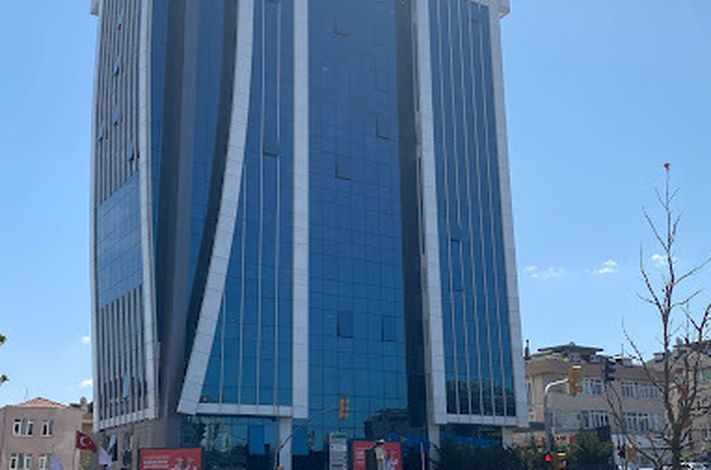







What does Medical Park Ataşehir Hospital offer patients?
How many specialists are there and what accreditation's have been awarded to Medical Park Ataşehir Hospital?
Thigh liposuction is a surgical procedure that uses a suction technique to remove fat from the thighs. It is done to eliminate stubborn fat and bring back a smooth contour to your thighs. The thighs are among the most common complaints for people seeking liposuction as it is notorious to be filled with excess fatty tissue. While a proper diet and regular exercise may help eliminate them, it is not uncommon for some stubborn fat to remain.
Just like liposuction done on other areas of the body, thigh liposuction can be done on both men and women as well. However, the procedure is more popular among women. Many women undergo thigh liposuction to visibly correct their appearance. The procedure can help slim and sculpt the area, creating a long slender look. As a result, clothes can fit better, and you can feel more confident. The thigh liposuction can also help women achieve the ‘thigh gap,’ which is considered a desirable feature.
Below are the areas on the thighs that can have liposuction:
Not everyone is a good candidate for thigh liposuction. You may be a right candidate for the procedure if you have good skin elasticity and are at a healthy weight for your body type. Remember, this procedure is not a weight-loss procedure, and it is designed for people who already practice a healthy lifestyle but are having trouble eliminating fat deposits in their thighs.
If you are currently trying to lose weight or experience weight fluctuations, you may not be a suitable candidate for thigh liposuction. Most surgeons recommend that you are within 30% of your ideal weight before getting thigh liposuction. Thigh liposuction is not recommended for people who have any serious diseases or those who smoke.
Before the actual procedure, you are going to have an initial consultation with your surgeon to determine which part of your thigh will receive the most benefits from liposuction. During this initial consultation, your surgeon may also check if you are an ideal candidate for the procedure and give you instructions to prepare for the procedure. Your surgeon may ask you to sleep at least 8 hours before surgery, avoid spicy foods, stop smoking and drinking alcohol, drink plenty of water, and wash the treatment area with an antibacterial soap on the day of the surgery.
On the day of your liposuction, your surgeon will start by administering anesthesia. Most thigh liposuction only requires local anesthesia, which only numbs the thigh area, so you will stay awake but won’t feel anything. In some cases, however, general anesthesia is required. General anesthesia causes you to be unconscious and unaware of anything throughout the procedure. A certified anesthesiologist monitors the use of general anesthesia to ensure your safety.
Once you are comfortably anesthetized, your surgeon will start creating a series of small incisions, typically shorter than one inch. These incisions are placed at specific areas of the thighs. Strategic placement of each incision is necessary to make sure all fat deposits are accurately eliminated. The surgeon will mark the incision sites with a marker to plan out the surgery.
The incisions are only large enough for the surgical device to be used and are placed in well-hidden locations, so they result in virtually unnoticeable scars.
After creating the incisions, your surgeon will then begin the liposuction. There are several techniques to perform liposuction in this area, but in general, your surgeon will insert a cannula into the incisions to suction the fat. The cannula is connected to a vacuum that suctions fat and fluids from your body. Your surgeon may use a laser to liquefy the fat. This makes it much easier for your fat to be suctioned. Once the suctioning is done, your surgeon will close the incisions with sutures or surgical glue. The last step is covering the incisions with a bandage.
It is important to remember that the thigh area is prone to cellulite. In certain cases, liposuction may improve the cellulite, but a different procedure may need to be performed to fade their appearance in most cases. Thigh liposuction also does not entirely get rid of saggy skin, so discuss other removal options with your plastic surgeon if you want to address the problem as well.
You can usually leave the hospital on the same day of your thigh liposuction, immediately after the effects of anesthesia wear off. In some cases, you may need to stay in the hospital for a night, particularly if general anesthesia is used. Since you may need to attend a follow-up checkup and you may experience some discomfort, it is recommended that you stay in Istanbul for around a week. Your surgeon will remove any stitches during the follow-up checkup.
Their recovery time after thigh liposuction can be different for everyone. In general, the total recovery period until you are allowed to resume your full normal routine may take around six weeks. You should be able to go back to work within 5 to 7 days following your surgery if your job does not involve a lot of physical activities. For the first two weeks following your thigh liposuction, you may need to wear a compression garment.
After thigh liposuction, your surgeon will give you a set of aftercare instructions. These may include how to take care of the surgical wounds, directions about prescription medications, and restrictions to your activity during your recovery time. In order to maintain the results of thigh liposuction, you will have to manage your weight through a healthy lifestyle, exercise, and diet.
Thigh liposuction is a safe and effective way to eliminate excess fat from your thigh. Liposuction has been a staple in cosmetic and plastic surgery for many years. It is known to have high success rates, with most people who had the procedure claimed to be satisfied with the results.
Although thigh liposuction is a very safe procedure, you need to be aware that all kinds of procedures carry some risks. The risks of thigh liposuction include:
Other risks and side effects of thigh liposuctions are numbness, infection, and adverse reaction to anesthesia.
One of the most recommended alternatives to thigh liposuction is CoolSculpting. Unlike thigh liposuction, CoolSculpting involves no incision and almost no downtime. It can reshape your thighs and give you similar results to liposuction.
Before thigh liposuction, you may have excess fat on your thigh that cannot be improved through exercise and diet. This may cause you to feel unconfident, make it hard for you to wear certain clothes, or cause discomfort when you’re walking. After the procedure, all of these concerns should be gone. You will have slimmer and more toned thighs.

















What does Medical Park Ataşehir Hospital offer patients?
How many specialists are there and what accreditation's have been awarded to Medical Park Ataşehir Hospital?














What does Medical Park Ataşehir Hospital offer patients?
How many specialists are there and what accreditation's have been awarded to Medical Park Ataşehir Hospital?
CONTACT SUCCESSFUL